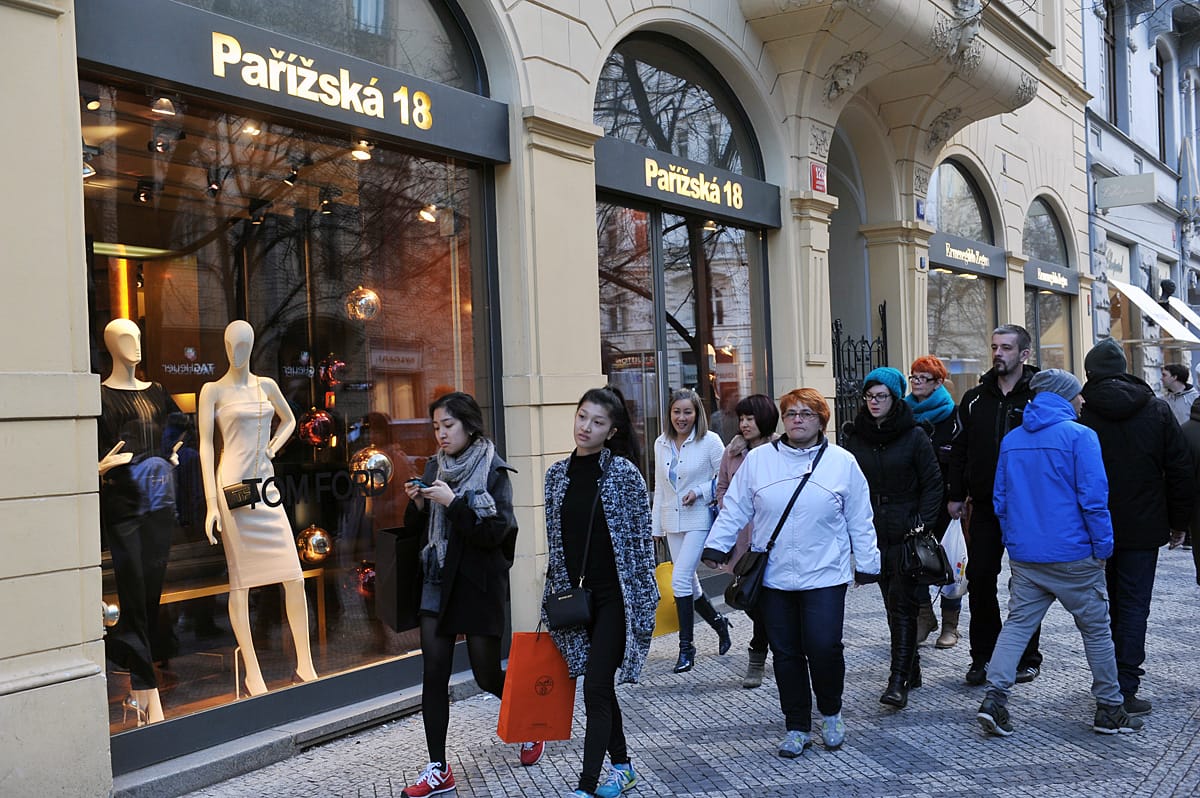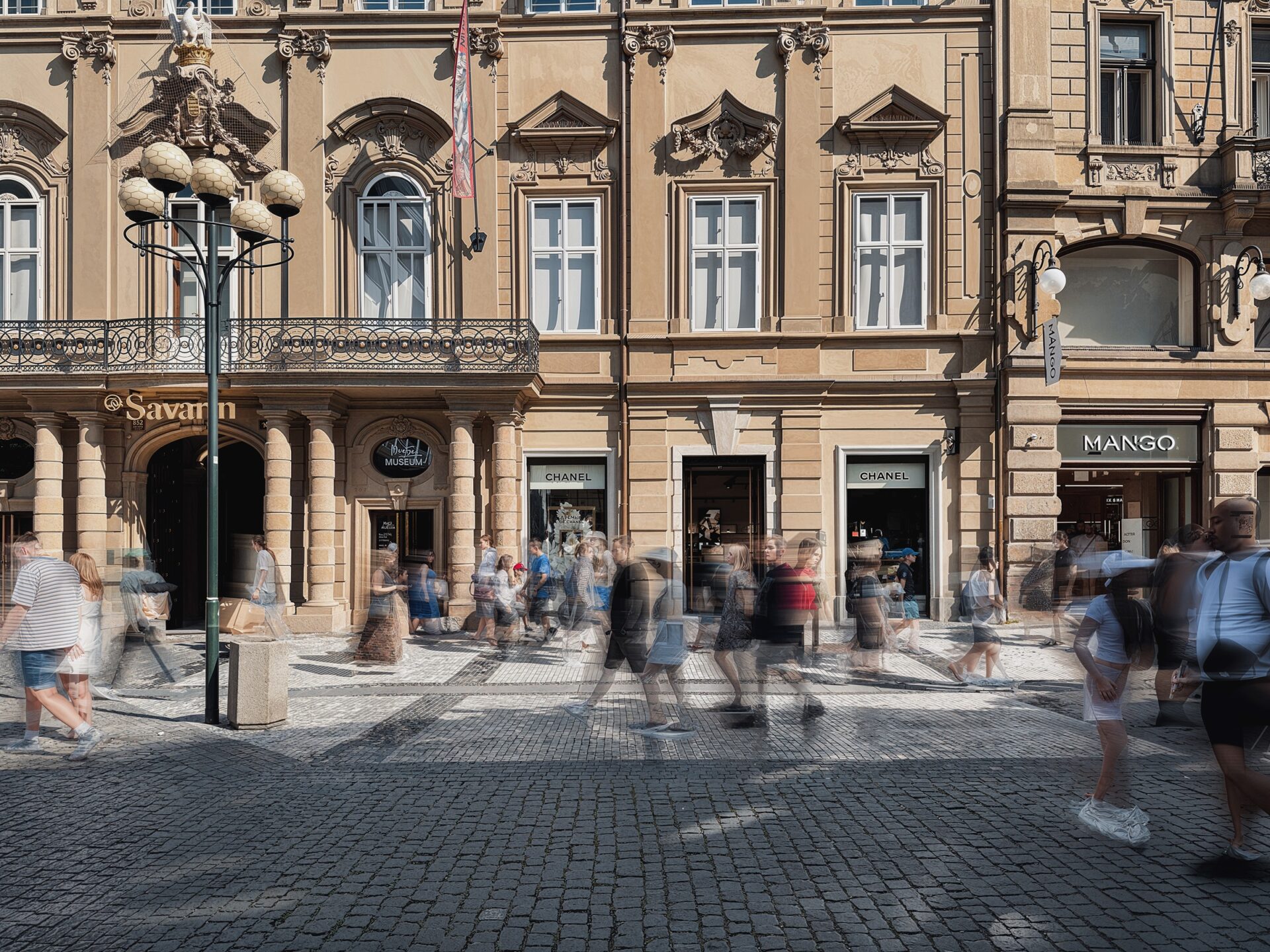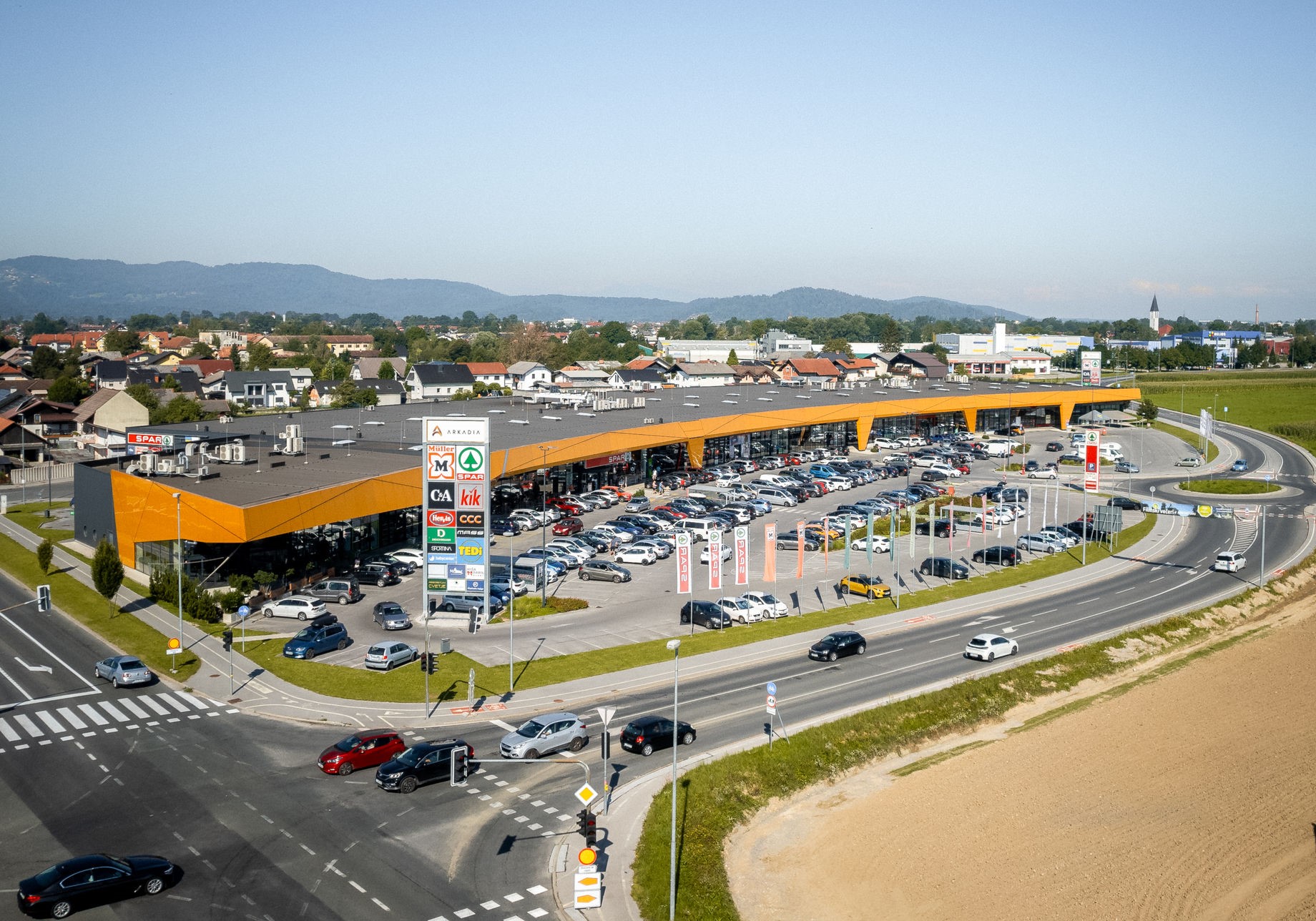In this year’s 33rd edition of the Cushman & Wakefield Main Streets Across the World ranking, the Czech Republic placed 19th. The survey compares nearly 50 countries around the world by the level of retail rents on the most expensive shopping street in each country, and the Czech Republic is represented for the second time by Pařížská street. It ranks 19th among the other most expensive shopping streets worldwide, 11th in Europe and first in the CEE region. The highest rent achieved in Pařížská, as of the third quarter of this year, is €2,700 per sqm per year, or approximately €225 per sqm per month.
Jan Kotrbáček, Partner and Head of Retail Leasing, Central and Eastern Europe, Cushman & Wakefield, commented: “Within Central and Eastern Europe, Pařížská street in Prague has long been a primary destination for luxury brands entering the region. Every year we witness store openings of some of one of the world’s luxury brands – last year it was Chanel, Balenciaga and ALO Diamonds, this year Polo Ralph Lauren and Jimmy Choo. Prague is clearly a very desirable destination for luxury brands within Europe, and Pařížská street creates a unique location for the presentation of luxury goods. This avenue and its surrounding area is by far the nicest, most compact luxury destination in Central Europe and has the widest range of brands represented.”
Further development of this prime retail location will be aided by the completion of major projects in the attractive area by the banks of the Vltava river near Miloš Forman Square and the Faculty of Law. The offer of retail space there will be expanded by 20 percent with new premises in the currently reconstructed Fairmont Golden Prague Hotel, Prague’s most luxurious hotel, located at Pařížská 30, and in the newly renovated landmark building at Pařížská 25. Together, the two projects will offer over 3,500 sqm of retail space for new brands entering the market or those considering relocating to more modern premises.
This is the second time that Pařížská Street has been featued in the ranking; this year it has also surpassed Na Příkopě street, which has represented the Czech Republic in previous years, in terms of retail rents. Repeatedly, Czechia is the only CEE country to appear in the top 20.
There were no significant changes at the top of the ranking this year compared to the previous year either: the USA remains in first place with Upper 5th Avenue, where retail rents amount to €20,384 per sq m per year, i.e. almost €1,700 per sqm per month. Second is Italy, whose Via Montenapoleone is repeatedly the most expensive shopping avenue in Europe. Hong Kong’s Tsim Sha Tsui is next, London’s New Bond Street is fourth, and the Avenue des Champs-Élysées in Paris rounds out the top five. The CEE region has long been dominated by the Czech Republic, with Hungary coming next, in 30th position thanks to Vaci utca.
Table 1: Ranking of countries by most expensive shopping streets
| Rank 2023 |
Market |
City |
Location |
Rent EUR/sqm/yr |
| 1 |
U.S. |
New York City |
Upper 5th Avenue (49th to 60th Sts) |
€ 20 384 |
| 2 |
Italy |
Milan |
Via Montenapoleone |
€ 18 000 |
| 3 |
Greater China |
Hong Kong |
Tsim Sha Tsui (main street shops) |
€ 15 219 |
| 4 |
United Kingdom |
London |
New Bond Street |
€ 14 905 |
| 5 |
France |
Paris |
Avenue des Champs Elysees |
€ 11 414 |
| 6 |
Japan |
Tokyo |
Ginza |
€ 9 299 |
| 7 |
Switzerland |
Zurich |
Bahnhofstrasse |
€ 9 243 |
| 8 |
Australia |
Sydney |
Pitt Street Mall |
€ 7 612 |
| 9 |
South Korea |
Seoul |
Myeongdong |
€ 6 542 |
| 10 |
Austria |
Vienna |
Kohlmarkt |
€ 5 160 |
| 11 |
Mainland China |
Shanghai |
West Nanjing Road |
€ 5 060 |
| 12 |
Singapore |
Singapore |
Orchard Road |
€ 4 395 |
| 13 |
Vietnam |
HCMC |
Dong Khoi |
€ 3 977 |
| 14 |
Germany |
Munich |
Kaufinger/Neuhauser |
€ 3 840 |
| 15 |
Greece |
Athens |
Ermou |
€ 3 480 |
| 16 |
Ireland |
Dublin |
Grafton Street |
€ 3 024 |
| 17 |
Spain |
Barcelona |
Passeig de Gracia |
€ 3 000 |
| 18 |
Netherlands |
Amsterdam |
P.C. Hooftstraat |
€ 2 800 |
| 19 |
Czech Republic |
Prague |
Parizska Street |
€ 2 700 |
| 20 |
Turkey |
Istanbul |
Centre – Istiklal Street |
€ 2 500 |
| 21 |
Malaysia |
Kuala Lumpur |
Suria KLCC |
€ 2 351 |
| 22 |
India |
New Delhi |
Khan Market |
€ 2 208 |
| 23 |
Norway |
Oslo |
Nedre Slottsgate |
€ 1 946 |
| 24 |
Canada |
Toronto |
Bloor Street |
€ 1 883 |
| 25 |
Denmark |
Copenhagen |
Stroget (including Vimmelskaftet) |
€ 1 743 |
Retail sector is resilient, luxury segment is doing well
Having come through the extraordinary times of the global pandemic, the retail sector has faced fresh challenges in the past year: higher inflation, rising interest rates and slowing economic growth. Additional problems are faced by locations dependent on office workers and international tourism which have not fully recovered to pre-pandemic levels yet.
Still, the retail sector has proved its resilience with the top 250 retail companies posting 8.5 percent growth y-o-y in revenue. Similarly, in the luxury sector, over 95 percent of brands reported profit growth in 2022, which continued into early 2023 with LVMH becoming the first luxury brand to reach a market capitalisation of USD 500 billion. Although the luxury sector has slowed overall, luxury sales growth remains in positive territory as seen in recent Q3 2023 earnings results. The end of 2023 and into 2024 is likely to remain a challenging trading period but one that we are confident the sector can endure as it continues to evolve to meet economic and societal change.
2019 was a record year for a large number of luxury brands on the Czech market in terms of turnover, however, according to Cushman & Wakefield’s information, this year the turnover of some luxury brands from Pařížská has already surpassed the pre-pandemic numbers. While with the global covid crisis, they have lost a significant portion of their clientele, which historically consisted of customers from Russia and other eastern countries including Asia, fortunately, the purchasing power of local clientele as well as customers from neighbouring countries is still growing, which has to some extent compensated for the drop in sales caused by the reduction in travel from Asia, the US and other major destinations.
Jan Kotrbáček, said: “The retail market is all about innovation and new ideas, quality product, good collections and a strong story. For new entrants, active and successful brands, these are the key prerequisites for their continued growth and ability to sustain themselves in the market over the long term. Czech customers are increasingly sophisticated, demanding product quality and originality. This favours the growth and expansion of luxury and premium brands: they are still entering the market in large numbers and existing brands are doing well.”
Rents below pre-Covid levels
This report focuses on headline rents in best-in-class urban locations across the world which, in many cases, are linked to the luxury sector. The rental values in this specific segment have been relatively immune to additional discounts, incentive packages or shared risk rental models that have become more prominent in the wider retail markets globally.
Rents in the world’s top retail destinations have continued to recover, rising by an average of 4.8 percent in local currency terms over the past year. Asia Pacific saw the strongest growth, averaging 5.3 percent, while Europe was up 4.2 percent and the Americas 3.2 percent. Notwithstanding the relatively strong growth over the past year, in most cases rent increases have not matched the level of headline inflation.
Moreover, almost 60 percent of markets worldwide remain below pre-pandemic rent levels. This is most evident in Europe, where 70 percent of markets are below this level. In contrast, in the United States, only 31 percent are at this level and 69 percent are above it.







